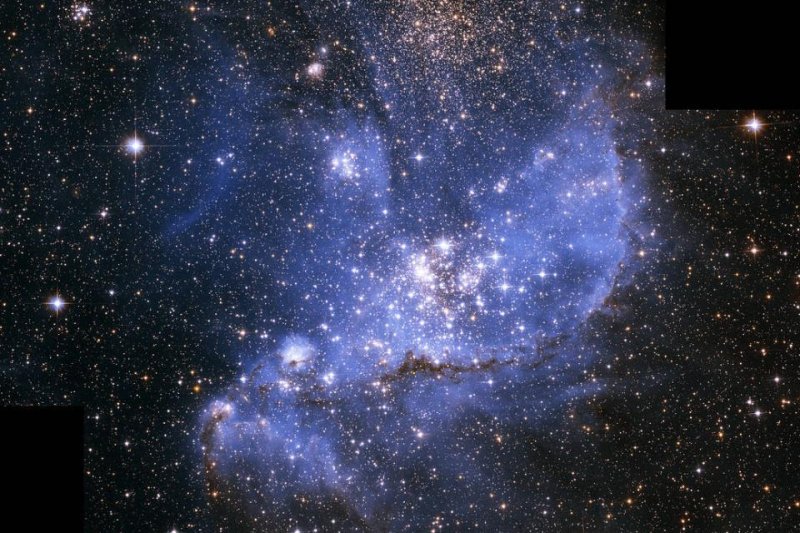March 26 (UPI) -- Stellar nurseries are the subject of two images from the Hubble Space Telescope and Herschel Space Observatory, shared this week on their respective homepages.
The Hubble image offers a portrait of the nebula NGC 346. The bright white glow of newly formed stars can be seen penetrating the nebula's vibrant blue -- and still collapsing -- gas clouds. The infant stars are so young they have to tap into their hydrogen fuel and ignite nuclear fusion.















